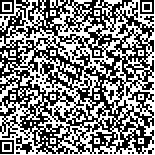| 引用本文: | 安子璇,张奇,史彩云,卢凤坤,王金,李炜.乳铁蛋白修饰党参多糖脂质体的制备及体外评价[J].中国现代应用药学,2023,40(10):1317-1329. |
| An Zixuan,ZHANG Qi,SHI Caiyun,LU Fengkun,WANG Jin,LI Wei.Preparation and in vitro evaluation of lactoferrin-modified liposomes of Codonopsis pilosula polysaccharide[J].Chin J Mod Appl Pharm(中国现代应用药学),2023,40(10):1317-1329. |
|
| |
|
|
| 本文已被:浏览 1761次 下载 960次 |

码上扫一扫! |
|
|
| 乳铁蛋白修饰党参多糖脂质体的制备及体外评价 |
|
安子璇1,2,3, 张奇1, 史彩云1, 卢凤坤1,2, 王金1,2, 李炜1,2
|
|
1.河北北方学院药学院, 河北 张家口 075000;2.河北省神经药理学重点实验室, 河北 张家口 075000;3.河北省唐山市曹妃甸区医院, 河北 唐山 063200
|
|
| 摘要: |
| 目的 选用乳铁蛋白(lactoferrin,Lf)为脑靶向配体,构建受体介导的Lf修饰党参多糖脂质体(lactoferrin-modified liposomes of Codonopsis pilosula polysaccharide,Lf-CPPS-LCL),并考察其体外跨越血脑屏障的能力及抗炎作用。方法 通过逆向蒸发法制备党参多糖脂质体(CPPS-Lips),以包封率为考察指标采用星点设计-响应面法筛选最优处方,利用Lf的氨基与脂质体膜表面DSPE-PEG2000-COOH共价结合,组装得到Lf-CPPS-LCL,并对其形态、粒径电位,以及体外释放情况进行考察;通过人脐静脉内皮细胞与大鼠脑胶质瘤C6细胞共培养建立体外血脑屏障模型,考察Lf-CPPS-LCL的透过能力;采用脂多糖诱导BV2细胞造成炎症模型,分别给予CPPS、CPPS-Lips和Lf-CPPS-LCL进行药物干预,通过ELISA法测定肿瘤坏死因子-α(tumor necrosis factor-α,TNF-α)、白细胞介素(interleukin,IL)-1β和IL-6的含量,应用Western blotting法测定BV2细胞Toll样受体4(Toll-like receptor 4,TLR4)、髓样分化因子(myeloid differentiation factor88,MyD88)和核因子-κB(nuclear factor-κB,NF-κB)的表达水平。结果 确定最优处方为脂药比31:1,大豆磷脂:胆固醇=28:5,超声时间25 min,DSPE-PEG2000的摩尔含量为5%。制得的Lf-CPPS-LCL的粒径为(197.5±0.6)nm,PDI为(0.2±0.02),zeta电位为(-18.8±1.1)mV,Lf-CPPS-LCL与原料药相比体外释放更加缓慢平稳。经Lf修饰后的脂质体与未修饰的脂质体相比对血脑屏障模型有更好的透过性;与模型组相比,Lf-CPPS-LCL能明显抑制炎性因子TNF-α、IL-1β、IL-6释放,下调BV2细胞TLR4、NF-κB、MyD88的蛋白表达(P<0.05或P<0.01)。结论 制得的Lf-CPPS-LCL形态圆整、粒径分布均匀、有较好的缓释作用及血脑屏障模型透过能力,Lf-CPPS-LCL可有效抑制脂多糖诱导的BV2炎症反应,其作用机制可能与下调TLR4及其下游的MyD88、NF-κB蛋白表达相关。 |
| 关键词: 党参多糖 脂质体 乳铁蛋白 脑靶向 血脑屏障 炎症 |
| DOI:10.13748/j.cnki.issn1007-7693.20221362 |
| 分类号:R943 |
| 基金项目:河北省自然科学基金资助项目(H2020405298) |
|
| Preparation and in vitro evaluation of lactoferrin-modified liposomes of Codonopsis pilosula polysaccharide |
|
An Zixuan1,2,3, ZHANG Qi1, SHI Caiyun1, LU Fengkun1,2, WANG Jin1,2, LI Wei1,2
|
|
1.Department of Pharmacy, Hebei North University, Zhangjiakou 075000, China;2.Hebei Key Laboratory of Neuropharmacology, Zhangjiakou 075000, China;3.Caofeidian District Hospital of Tangshan City, Hebei Province, Tangshan 063200, China
|
| Abstract: |
| OBJECTIVE To construct receptor-mediated and lactoferrin-modified liposomes of Codonopsis pilosula polysaccharide(Lf-CPPS-LCL) by selecting lactoferrin(Lf) as brain targeting ligand, and to investigate its ability to cross blood-brain barrier and anti-inflammatory effect in vitro. METHODS CPPS-Lips was prepared by reverse evaporation method. The optimal prescription was screened by the Box-Behken design-response surface methodology using the encapsulation rate as the index. The amino group of Lf was covalently combined with DSPE-PEG2000-COOH on the surface of the liposome membrane to obtain Lf-CPPS-LCL. Then its morphology, particle size, potential and release degree in vitro were investigated. Established an in vitro blood-brain barrier model by co culturing human umbilical vein endothelial cells and rat glioma C6 cells to investigate the permeability of Lf-CPPS-LCL. Lipopolysaccharide was used to induce inflammation model in BV2 cells. And the BV2 cells were treated with CPPS, CPPS-Lips, and Lf-CPPS-LCL. The levels of tumor necrosis factor-α(TNF-α), interleukin(IL)-1β and IL-6 was measured by ELISA. Western blotting was applied to determine the expression levels of Toll-like receptor 4(TLR4), myeloid differentiation factor(MyD88) and nuclear factor-κB(NF-κB) in BV2 cells. RESULTS The optimal prescription was determined as follows:The ratio of lipid to drug was 31:1, the ratio of soybean phospholipid to cholesterol was 28:5, sonication time was 25 min, and molar content of DSPE-PEG2000 was 5%. The particle size of Lf-CPPS-LCL was (197.5±0.6)nm, the PDI was (0.2±0.02), and the Zeta potential was (-18.8±1.1)mV. Compared with the raw material drug, Lf-CPPS-LCL was released more slowly and smoothly in vitro. Compared with unmodified liposomes, Lf-modified liposomes had better permeability to the blood-brain barrier model. Compared with the model group, Lf-CPPS-LCL significantly reduced the release of inflammatory factors TNF-α, IL-1β and IL-6 and down-regulated the protein expression of TLR4, NF-κB and MyD88 in BV2 cells(P<0.05 or P<0.01). CONCLUSION Lf-CPPS-LCL has a rounded morphology, with uniform particle size distribution, good sustained release and blood-brain barrier model permeability. Lf-CPPS-LCL could effectively inhibit LPS-induced inflammatory response in BV2 cells, and its mechanism of action may be related to the down-regulation of TLR4 and the protein expression of MyD88 and NF-κB on its downstream. |
| Key words: Codonopsis pilosula polysaccharide liposome lactoferrin brain targeting blood-brain barrier inflammation |
|
|
|
|
